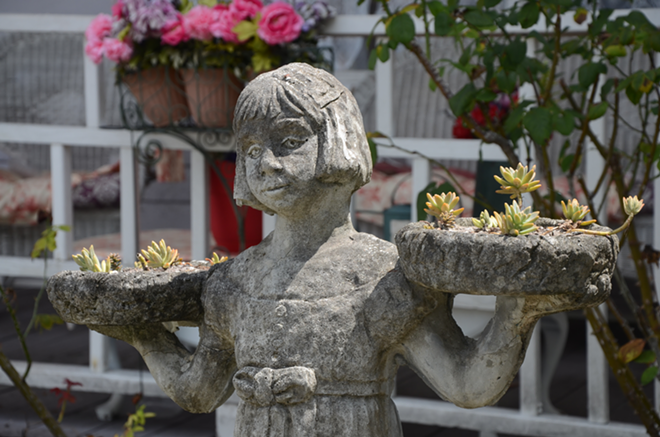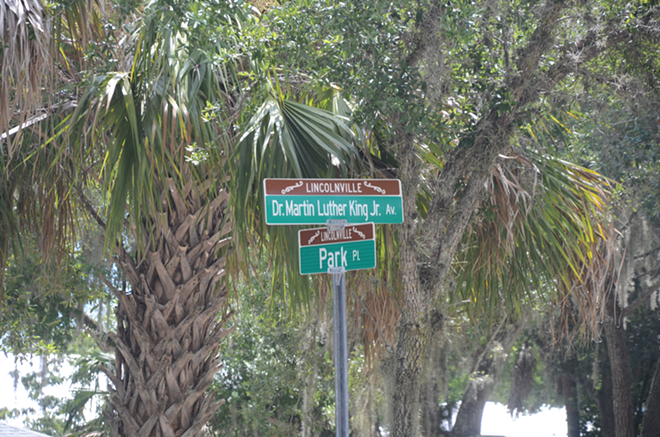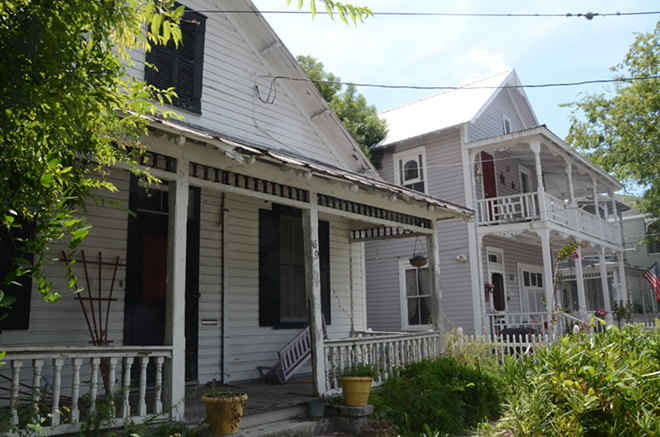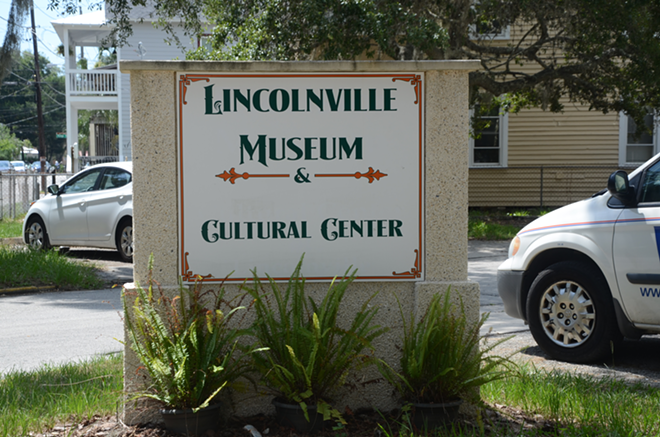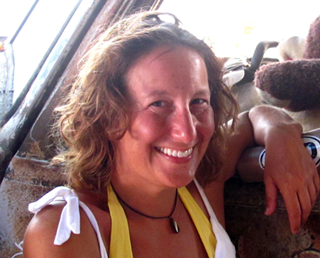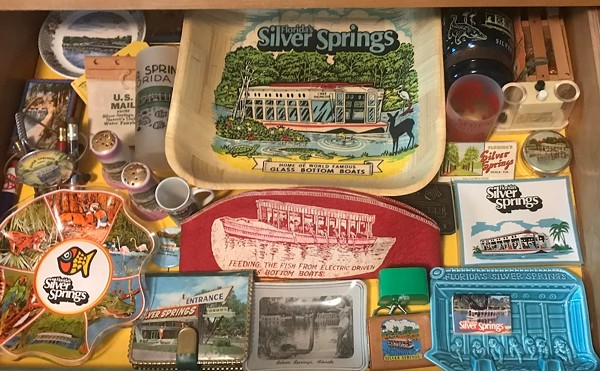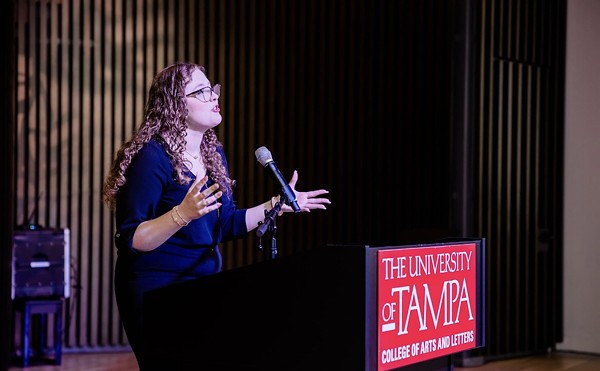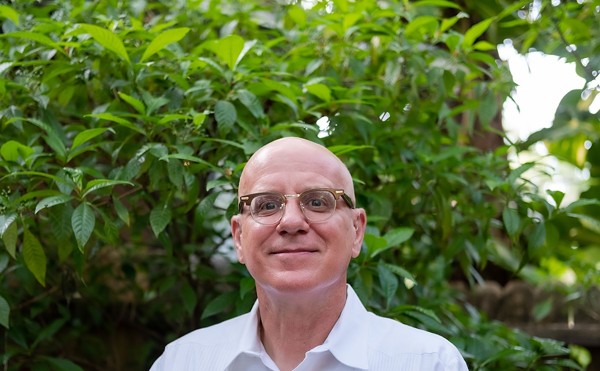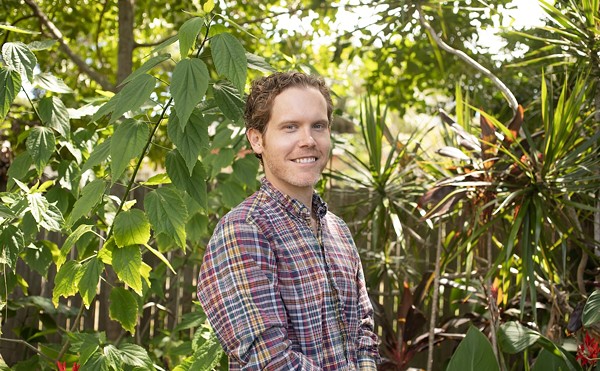If all St. Augustine had going for it was "oldest city in the United States" I would never go there again. I grow weary of the Spanish Quarter. I mean, how many times can you walk through the oldest schoolhouse? Honestly, there's more to St. Augustine than this, and I made it my mission (see what I did there?) to find it.
Problem is, real history — the fun stuff — doesn't fit in boxes like the names and dates. Also, sometimes you get to watch history getting made, and it makes you cringe.
OK, well, first things first: St. Augustine, if you can forgive it for being so damn insistent that it's the oldest city in America (really, you can't blame it, because those Jamestown schmucks totally co-opted that) has some awesome stuff. We stayed as guests of the Casa de Suenos, a funeral home turned B&B that sadly seems to have no ghosts but, happily, lies outside of the Spanish Quarter yet within walking distance of pretty much everything we wanted to see. After a late-night arrival, a hot Jacuzzi bath and a glass of in-room sherry (16th-century conquistadors had no such niceties), I collapse, exhausted, but wake determined to see something of St. Augustine that isn't a tourist trap. Fountain of Youth? Um, no, that's totally made up — Ponce de Leon never even believed in it.
For all its touristy history, though, St. Augustine really can't help but ooze charm. It's eminently walkable, and while we tend to spend our time looking at dead people (the Huguenot and yellow fever graveyards make me inordinately happy), there's no denying later — as we sit on the upper deck of Meehan's and work our way through a seafood tower and some superbly smooth Irish whiskey —that the old city has something special. We watch the horse-drawn carriages pull tourists in love up and down the waterfront, and we watch the sun sink into the bay over the Bridge of Lions.
The real reason I'm here, though, is the Night of Lights.
Every Christmas season, St. Augustinians light pretty much every solid surface of the city with three million twinkly lights, earning the celebration a spot on National Geographic's list of the world's ten best holiday light displays. And certainly the lights impress, but to me, the reason the lights came about at all touches me more.
When St. Augustine belonged to Spain, the Brits had a lot of angst about the Spanish being so close to the colonies. The Spanish, for their part, weren't in love with the Brits being right next door, either. Florida was then — as it is now — damn desirable, so being a Spanish sailor in Florida was not a whole lot of fun, what with tensions high and every boat maybe staging an attack on La Florida. On top of that, sailors returning home had no easy way to tell if the city remained under Spanish control or if it had fallen into enemy hands.
The people of St. Augustine had an easy workaround for this: If the city remained safe, homes facing the water burned a single candle in the window. If the ships didn't see all the windows lit up, they knew the city was under siege or had already fallen under enemy control.
Hence, the Night of Lights.
This story remains at the forefront of my head the next day. A stop at a nondescript sandwich shop (Hot Shots) for an exquisite sandwich leads us further away from the city, this time in a car. We head into Lincolnville, an historically African-American part of town that clearly hasn't blossomed under the same level of care and love as the Spanish Quarter.
Reading about Lincolnville does nothing to prepare me for the municipal neglect shown this historic district. Less than a mile from the gloried Spanish Quarter, the street remains desolate, except for those gathered around the Saint Francis House. Few brass plaques celebrate the Freedom Trail, although less expensive wall-mounted signs do tell the district's history, of how St. Augustine became the heart of the Civil Rights Movement — over in the Quarter, another sign denotes the former site of a lunch counter sit-in. We see no such signs near homes, although my research tells me several homes have deep significance.
The district has two types of homes: those with restorations in media res, and those that seem unloved, save for the evidence of families trying to make a life inside their walls. And perhaps I'm reading too much into everything, but it also seems the love shown some of these homes in this historically black district doesn't spread to any of the schools or public buildings, which quite badly need the help.
That's when I realize: simply being an historically black neighborhood does not guarantee the future. If black opportunity in the northern reaches of the state perhaps has not kept pace with the value of homes built by freed slaves with carpentry skills, the ugly face of gentrification — not racism, not exactly, but disenfranchising all the same — shows itself.
It is capitalism. It is how America works. I have no proof the color of the community is changing, but there's too big a disparity between the proud history of civil rights and the Home Depot trucks unloading new fencing; too much a difference between the new hurricane-proof double-pane glass going in some homes and the mold creeping around the walls of a one-story structure near the Lincolnville Museum, the stucco building boarded and empty.
No light shines in those windows.
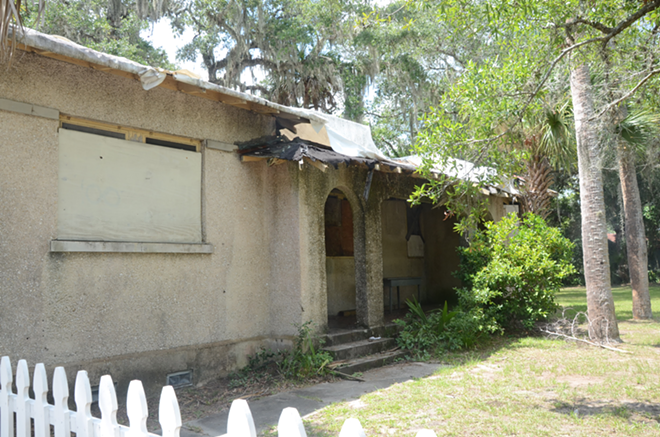
Want a lighter look at St. Augustine? Check out some places to eat Minorcan Clam Chowder and seafood.

